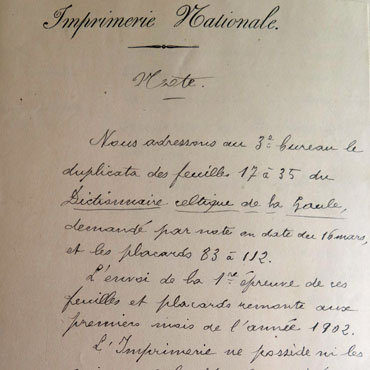
- Home
- The Commission de Topographie des Gaules
- A legacy
- The Commission de Topographie des Gaules, an apparent failure
The significance and impact of the work of the Commission de Topographie des Gaules (CTG) were subject to much criticism following its disappearance in 1879. An article by Salomon Reinach in the Revue archéologique in 1915, qualifying the Gallic maps as “administrative work”, particularly contributed to its being considered a failure.
An article to be considered in its context
In January 1915, Salomon Reinach was made responsible for supervising the completion of the publication of the Dictionnaire archéologique de la Gaule, begun by the CTG and continued by Émile Cartailhac. He very quickly found himself in conflict with the Imprimerie nationale. The copper plates and illustrations for the dictionary’s publication had been lost. The Imprimerie nationale claimed that they were at the museum. Salomon Reinach, the museum’s director, claimed they were at the Imprimerie. Hence, we can imagine his state of mind as he wrote his article, facing significant administrative problems, as the First World War continued to rage, and suddenly finding himself forced to publish, and quickly, a work eagerly awaited by numerous scholarly societies. What is more, the dictionary’s writer, Émile Cartailhac, was experiencing financial difficulties and lacked time to finish the manuscript.
A heritage in tatters
Salomon Reinach’s article was not the only reason the commission came to be considered as a failure. The archives of the work of the CTG were widely dispersed. Some of the archives remained with the members and correspondents who took part in the projects. Émile Cartailhac took some of the archives to Toulouse in order to complete the dictionary. Other items were deposited in various institutions in Paris and elsewhere in France, and others, due to their quality and interest, were divided up into diverse documentary records. Despite this dispersal, the archives confirm one thing: the CTG was the first attempt to structure archaeology in France.


